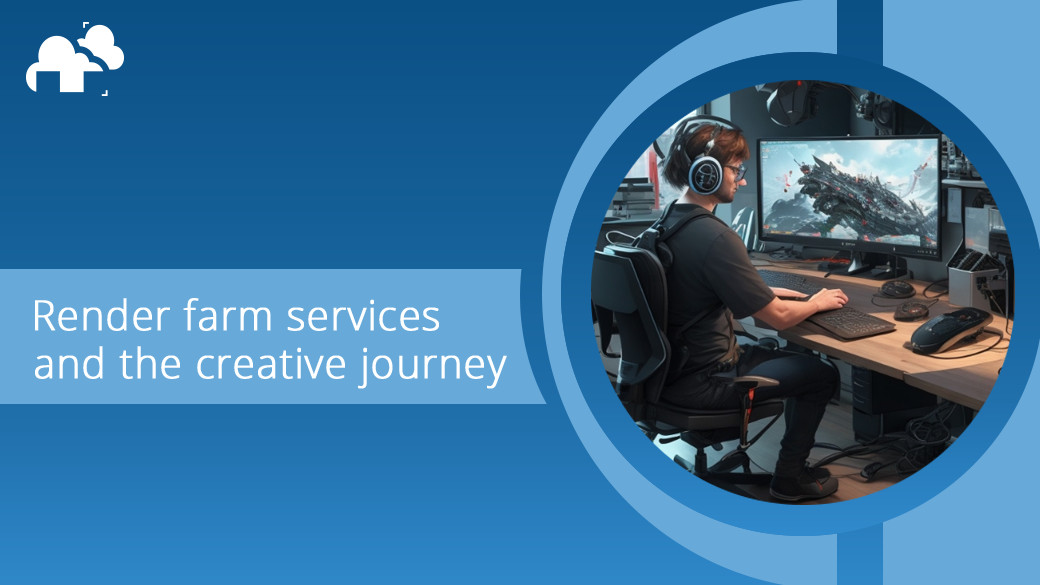
In today's highly saturated multimedia market, creativity is more precious than ever. The rapid pace of content creation and the need for constant innovation can be challenging for studios to foster the creativity necessary to stand out. While various tools and services have helped to bring down technical hurdles, the success or failure of a project ultimately hinges on creativity. Render farm services have emerged as an invaluable tool for 3D visualization and animation studios. By distributing rendering tasks across multiple computers, render farms can significantly reduce rendering times, freeing up time for artists and designers to focus on the creative aspects of their work.
However, render farms can also undermine creativity by introducing a new set of constraints for studios to work with. This blog post will delve into how render farm services can augment and restrict creativity, as well as what considerations can be made to make the most out of a render farm service.
Render farms are the powerhouse behind creating intricate 3D models, high-quality graphics, and animations. They provide artists with access to robust hardware, raising the ceiling on what aspects of their artistic vision might be feasible within any given time constraint. They streamline workflows and inspire artists to create complex works previously thought impossible.
For instance, let’s say a studio is at the stage of creating the first draft of their film. Their story involves a complex fantasy world with detailed environments, a wide range of characters, and dynamic action sequences.
Without a render farm, rendering a single frame of this film could take hours, if not days, on a standard workstation due to the intricate details and complexity. If the film is to be projected at 24 frames per second, that's a lot of hours for each second of the film! This would need to be factored into the project’s timeline, cutting hours that would have been spent refining concepts, scripts and looks.
It would also create a bottleneck where the animators and visual artists have to wait for their work to render before they can review it, make revisions, and move on to the next scene. But, by utilizing a render farm they could render multiple frames or even entire scenes simultaneously, significantly accelerating the production process.
The artists could then spend more time developing new ideas, refining their work, and perfecting the film's visual style. They could quickly see the results of their animation and visual effects, make any necessary adjustments, and then see the results of those adjustments. This fast iteration cycle could help them achieve their creative vision more effectively.
Most importantly, the use of a render farm could enable the studio to push the boundaries of their creativity because more complex and detailed scenes would no longer be considered as impractical to produce. They could create more intricate models, more realistic lighting and shading, and more dynamic animations and simulations, leading to a more visually stunning and artistically compelling film.
However, while enhancing creativity, render farms can sometimes inhibit it.
Imagine that the same studio prides itself on its unique and artistic style. The studio specializes in simulating a hand-drawn look using their proprietary plugin that is highly expressive. They've been commissioned to create an animated short film for a client, and they're excited to get started.
The studio decides to use a render farm to speed up the rendering process. They use a cloud-based service that promises fast rendering times and high-quality output. The service is powerful and efficient, allowing the studio to render many frames simultaneously, reducing the rendering time significantly.
Unfortunately, the render farm service provider has limitations on the software and tools that the studio can use. The provider requires the studio to use specific software and plugins that are compatible with their system. This limits the creative team's ability to use their preferred tools and plugins, and they find that they can't achieve the same level of stylization and expressiveness that they're used to.

To overcome the limitations described in the previous scenario and maintain their creative vision, our hypothetical studio may need to consider the following aspects of a render farm service provider:
Flexibility: The render farm service provider should be flexible in terms of the software and tools used in the creative process. This allows the studio to use their preferred tools and plugins and achieve their unique artistic style.
Customization: The render farm service provider should offer or at least be flexible to customization options that allow the studio to tailor the rendering process to their specific needs. This can include options for adjusting output quality, resolution, and other parameters that impact the final look of the animation.
Compatibility: The render farm service provider should be compatible with the core 3D rendering software used by the studio. This ensures that the studio can fully utilize their existing tools and equipment without having to make unnecessary changes.
Quality of service: The render farm service provider should provide high-quality services, including fast rendering times and high-quality output. The provider should also offer reliable technical support to ensure that any issues are promptly resolved.
Security: The render farm service provider should have robust security measures in place to protect sensitive data and intellectual property. This includes encryption, password protection, and secure data transfer protocols.
Cost: The cost of using the render farm service provider should be reasonable and competitive with other providers in the industry. The provider should offer transparent pricing and flexible payment options to ensure that the studio can stay within their budget.
By considering these aspects when choosing a render farm service provider, the studio can find a provider that aligns with their creative vision and allows them to maintain their unique and artistic style.
The flexibility and customization options provided by the provider can help the studio to use their preferred tools and achieve the desired look and feel for their animation. Compatibility with the studio's software and hardware can ensure that they can fully utilize their existing tools and equipment, while high-quality service and technical support can help to ensure that the project is completed on time and to the highest standards.
Strong security measures can also provide peace of mind and protect the studio's sensitive data and intellectual property. Finally, the cost of the provider's services should be reasonable and competitive, allowing the studio to stay within their budget while still achieving their creative goals.
Every artist's or studio's needs are unique, so the key is to make a careful assessment of creative needs against what different render farm service providers have to offer. By doing so, creative professionals can find a provider that meets their needs and helps them realize their full potential. By effectively leveraging render farms, artists can turn their visions into reality more efficiently and creatively than ever before.